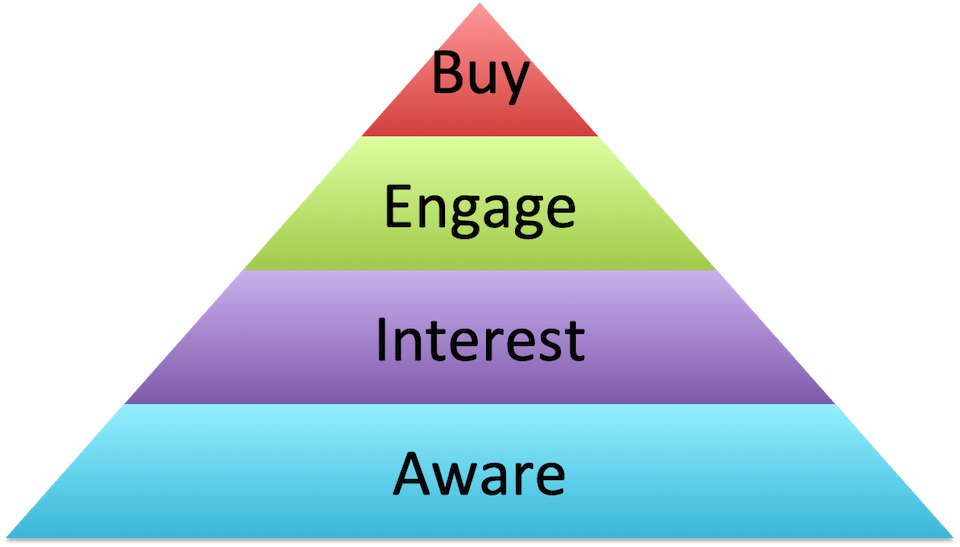Are you using Content Marketing for Small Business?
Do you even need one?
Good question. Let’s start with a different question.
Have you ever Googled something?
Silly question, of course you have. 🤪
Did you know that the answers you find are a direct result of content marketing?
That’s right.
With the exception of ads, what you google has been put there on purpose.
And for many business owners, content marketing for small business is one of the best ways to drive new leads and customers to their business.
Pretty powerful stuff when you think about it.
What if, when your ideal customers typed in a question about the products or services you offer, your company came up?
Would that have a positive impact on your business?
Absolutely!
So if you are a business owner, whether you sell a product or a service, the question isn’t if content marketing is right for you. Rather, it’s how you can use content marketing to drive more traffic and attention to your business.
Now, before we answer that question, let’s start with answering the question, “What is content marketing?”
What Is Content Marketing?

I’ve written extensively about different kinds of marketing that can help drive new leads and customers to your business. You can read about them here.
That said, as more of the world shifts towards online commerce, the reality is if you aren’t practicing various forms of online marketing, you are missing out.
There are various forms of online marketing. Content marketing for small business specifically involves the design, development, and sharing of information, in various forms, intended to provoke interest in a product or service.
Let’s look at an example.
Assume I sold C.R.M. software. If I thought about my ideal customers, who they are, and what their interests are, it becomes apparent there are topics they are looking for on the internet.
Some examples might include:
How to increase sales?
Will email marketing work for my business?
Ways to track and manage customer leads.
So if I was to publish information that answers these questions, including written content, video, and info-graphics, then there is a chance they might find my content.
If they find it and read it (and it’s helpful), they might click on my call to action that provides information on my software… and their contact information.
Now I have a lead.
I’ve oversimplified the example, of course (and the amount of work that would be behind it), but you get the picture.
What makes content marketing for small business appealing, is that the cost is relatively low when compared to other similar forms of marketing and advertising.
Will Content Really Help Me Sell?

To be clear, content marketing isn’t easy.
Although not super expensive, like buying advertising, the upfront costs can still add up.
There is an investment of either time or money to create the content. But if it’s been done correctly, the content can drive leads to your business for years.
Like any kind of marketing, the goal of content marketing for small business is to use content (that’s valuable, helpful, provocative) to catch your customers attention.
A different way to think about it is this… What are people typing into Google right now, that my product or service can address? What questions do they have that I can answer?
Let’s Get Back to the Fundamentals
Your product or service is meant to resolve a problem.
What questions do your potential customers have related to their problem that you can answer?
Armed with this information, if you start to create content that answers these questions, then voila—you are using content marketing.
But content alone isn’t enough.
What will catch the attention of your ideal customer? What will make them want to reach out to you and seek your help?
Writing dozens of blog posts or sending emails repeatedly on the same topic won’t get anyone’s attention.
You need to use captivating and useful content, or C.U.C., as I like to call it.
CAPTIVATE the attention of your audience using interesting headlines that get them to STOP and consume.
Ensure the content is USEFUL and provides insights, tips, and other strategies that are immediately helpful.
Share the CONTENT in various forms including video, audio, written, and info-graphics.
Using the C.U.C. approach will keep your audience consuming your content, and indirectly make you the go-to expert.
So now that you recognize the value of content marketing, let’s talk about building your plan for success.
Getting Started: How to Build Your Content Marketing Strategy

So by now, you’ve hopefully decided that there’s some logic in this content marketing thing.
Great! Now what?
Let’s build your Content Marketing Strategy so that you have a clear direction and the plans to support it.
More importantly, you’ll have something to measure your progress against!
First, let’s start your strategy by answering a series of questions:
-
Who is your ideal customer? (For more information on how to answer this, go here.)
-
What are the challenges they face? (Think about this in terms of the questions they ask.)
-
How does your product or service help resolve these problems?
-
What forms of content are your ideal customers consuming?
- Do they read online content?
- Will they tend to look to videos to demonstrate what they need?
- What social media channels do they spend time on?
-
What will capture their attention and make them stop to consume your content?
- Is your product or service complex and require simplification?
- Should you take a provocative approach?
-
What content is already in the marketplace that is capturing their attention?
-
Who are your competitors and what are they doing?
-
What seems to be working to get your ideal customers’ attention?**
-
Is there an angle you can take that further complements what is already out there?
-
To do this effectively often requires a tool such as Ahrefs, BuzzSumo, and/or SEMrush, although this can be replicated with Google to some extent. My personal preference is Ahrefs.
With these questions answered, you have enough information to really dive into developing a content marketing strategy.
Building Your Content Marketing Strategy
First off, let’s consider how you will implement your strategy by answering the following questions:
-
Who are we targeting?
-
What forms of content will we use (and why are they relevant to our target audience)?
-
How will we deliver the content (i.e., email, blogs, video, social media, etc.)?
-
Is there an end goal for anyone who engages with our content?
-
What calls to action (C.T.A.’s) will we use? (To learn more about what a C.T.A. is, read this).
-
How will we continue to follow up (and maintain the customers interest)?
A key component of any content marketing strategy for small business is creating what I like to call your Progression Pyramid.
The Progression Pyramid consists of the steps you walk each person through in order to move them from cold lead to paying customer.
To develop your own, consider the steps your ideal customers would progress through in order to take them from cold lead to paying customer.

Bringing Your Content Marketing Strategy to Life
Content marketing for Small Business might seem like a lot of work… and it is.
It’s a marathon, not a sprint.
But the results, if done correctly, are eyeballs on your business.
And unlike paid advertising, the content continues to produce traffic, month after month, year after year.
How would that impact your business?
What would it mean for your business to have a steady stream of traffic littered with potential leads?
If you could take every lead that came your way through the proven steps to convert them to a paying customer, how would it impact your business?
Can you say GAME CHANGER?
What’s next?
Using the six simple steps above, create your content marketing strategy.
Armed with this information, you can begin producing content.
If your customers’ eyeballs are online (and they are), your best long-term, low-cost solution to gaining their attention is content marketing.
What are you waiting for?
© Shawn Casemore 2020. All Rights Reserved.

Share This Article
Choose Your Platform: Facebook Twitter Google Plus Linkedin